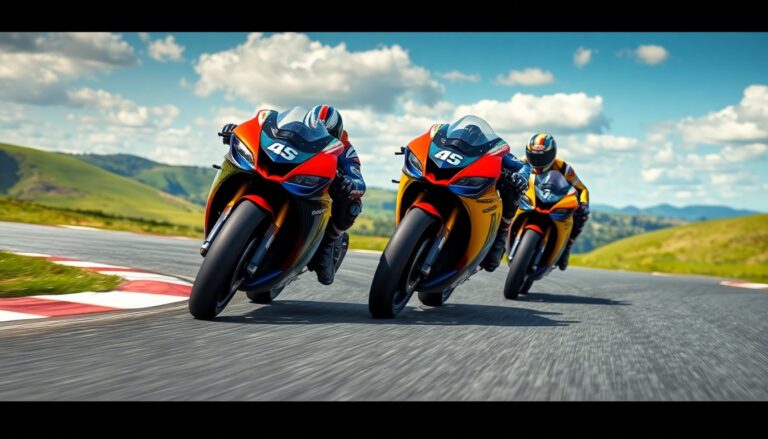Argomenti trattati
The MotoGP series stands as the pinnacle of motorcycle racing, featuring the fastest bikes and the most skilled riders globally. This exhilarating competition has captivated fans since its inception, merging speed, cutting-edge technology, and strategic prowess into a breathtaking spectacle. This article delves into the history, technological advancements, and future outlook of MotoGP, providing insights into what makes this sport so engaging.
History of MotoGP
The origins of MotoGP trace back to 1949, when it was known as the FIM Road Racing World Championship Grand Prix. Initially, the series encompassed various motorcycle classes, with the premier class consisting of 500cc motorcycles. Over the decades, the sport has undergone significant evolution, transforming into the modern-day MotoGP that enthusiasts recognize today.
In 2002, the series underwent a significant transformation, rebranding as MotoGP. This change marked the beginning of a new era characterized by advanced technology and heightened competition. The introduction of four-stroke engines that year revolutionized the sport. Manufacturers seized the opportunity to enhance performance and speed, resulting in remarkable rivalries and unforgettable races. These thrilling moments have left a lasting impression on fans and shaped the history of MotoGP.
Technological advancements in MotoGP
The technological innovations in MotoGP are impressive and continually evolving. Manufacturers dedicate substantial resources to research and development to secure a competitive advantage. A pivotal advancement in recent years is the Electronic Control Unit (ECU), which enables teams to optimize their bikes’ performance in real-time. The ECU oversees essential functions such as traction control, anti-wheelie systems, and engine mapping. This technology equips riders with critical tools to navigate demanding tracks safely and effectively.
Chassis and aerodynamics
The design of the chassis and aerodynamics is pivotal for a motorcycle’s performance. Modern MotoGP motorcycles utilize lightweight materials, such as carbon fiber, which enhance performance while ensuring durability. Engineers prioritize aerodynamic designs that minimize drag and enhance stability at high speeds. This ongoing evolution in bike design continually expands the limits of motorcycle racing.
Safety advancements
With increasing speeds in MotoGP, there is a heightened emphasis on rider safety. The adoption of advanced safety gear, including airbag suits, has become standard for riders. These suits inflate upon impact, offering an additional layer of protection. Furthermore, modifications to tracks have introduced safer run-off areas and improved barriers, significantly reducing the risk of serious injuries during crashes.
The future of MotoGP
The future of MotoGP is promising, characterized by vibrant growth and innovation. The sport is expanding its global fan base, leveraging social media and digital platforms to reach new audiences.
One significant development is the introduction of electric motorcycles, exemplified by the MotoE series. This shift emphasizes sustainability while preserving the excitement of competition. From a regulatory standpoint, the integration of electric vehicles aligns with broader environmental goals and reflects changing consumer expectations.
As technology evolves, MotoGP motorcycles are likely to feature enhanced capabilities. Improved data analytics and advanced rider training methods will support this evolution. Such advancements not only promise to elevate the racing experience for fans but also aim to foster the overall growth of motorcycle racing on a global scale.
MotoGP transcends the realm of traditional racing; it embodies the pinnacle of human skill, advanced technology, and the unyielding quest for speed. As the sport continues to evolve and push boundaries, it remains a source of excitement and inspiration for motorcycle enthusiasts and spectators alike. The enduring appeal of motorcycle racing promises to engage and thrill audiences for years to come.

